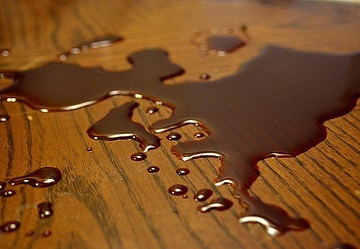* Gloves protect your hands 100 percent of the time.
“People think gloves protect their hands 100 percent of the time, but that’s actually not true,” says consultant and speaker Leslie Canham, CDA, RDA. “Gloves have micro perforations and pinholes that are actually allowed. The Food and Drug Administration (FDA) oversees exam gloves because they are medical devices. The FDA allows a 2.5 percent defect rate in gloves. That means the gloves don’t have the integrity that people think they have. Sometimes, when you put your gloves on, you pull, and those micro perforations and pinholes get a little larger than they were in the box. It reinforces the need for handwashing after you remove your gloves every single time.”
* Can sterilized items that are wrapped or in peel pouches be removed from the sterilizer when damp?
A: No.
“All sterile items that are to be removed, after the cycle is complete, should be completely dry,” says Joyce Moore, RDH, an infection control consultant and clinical instructor at Bristol Community College in Fall River, Mass. “If items are touched when damp, bacteria can be wicked and enter the packages, thus rendering them contaminated.”
* Which side of an autoclave bag faces up? The plastic or the paper side?
A: It depends.
“It is whatever the manufacturer’s directions say to do,” Canham says. “Of course, there are many different sterilizers in many different dental offices, so you can’t just say, automatically, ‘Well, you put it paper-side up.’ It really depends on the manufacturer of the unit. Probably, the real answer is, ‘Where does the steam get withdrawn from the unit?’ Is it out of the bottom or out of the top? The manufacturer can very easily describe how their sterilizer operates. The answer is that it depends on the manufacturer’s directions. If the manufacturer hasn’t given clear, written directions in their operating manual, it’s worth a phone call to the manufacturer to find out.”
“Don't let this answer be based on a someone else's advice,” Moore adds. “Many times, I've seen clinicians get this dead wrong. The best advice I can give is to refer to the manufacturer's instructions for use for the sterilizer. Some specify paper-side up and others state plastic-side up. There might even be a better option that is listed in that manual, like the use of a pouch rack, that will allow you to stand pouches on edge to facilitate better drying.”
* Can extracted teeth be disposed of in the regular trash?
A: No.
“Extracted teeth are considered potentially infectious and, unless local or state laws permit it, they should be returned to the patient upon request or disposed of in a medical waste container,” Moore says. “Extracted teeth containing amalgam should not be sterilized for educational purposes or put in medical waste that will be incinerated.”
* Should surfaces contaminated with visible blood be cleaned and disinfected with a hospital disinfectant?
A: Yes.
There are different types and levels of disinfectants that can be used within the dental practice. Standard disinfectants, such as those found in household cleaning products, are able to kill common bacteria, but their use would be limited to nonclinical areas.
Hospital disinfectants are EPA-registered for use in hospitals, clinics, dental offices and other medical facilities, and they should be used in all clinical areas.
“Any clinical contact surface that is contaminated with visible blood should be cleaned and disinfected with an intermediate-level disinfectant that carries a tuberculocidal claim,” Moore says.



.jpg)




